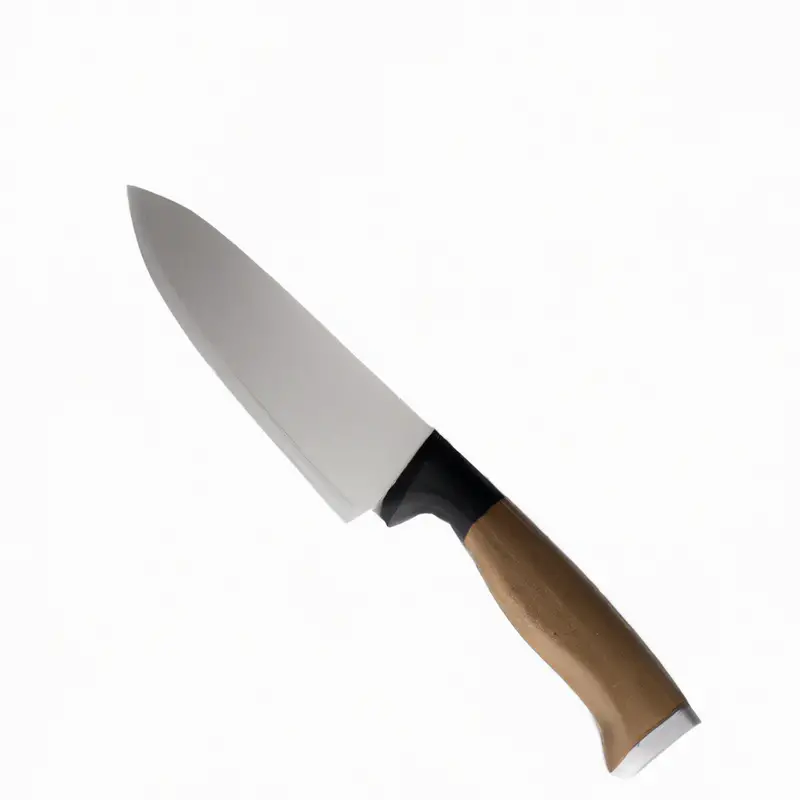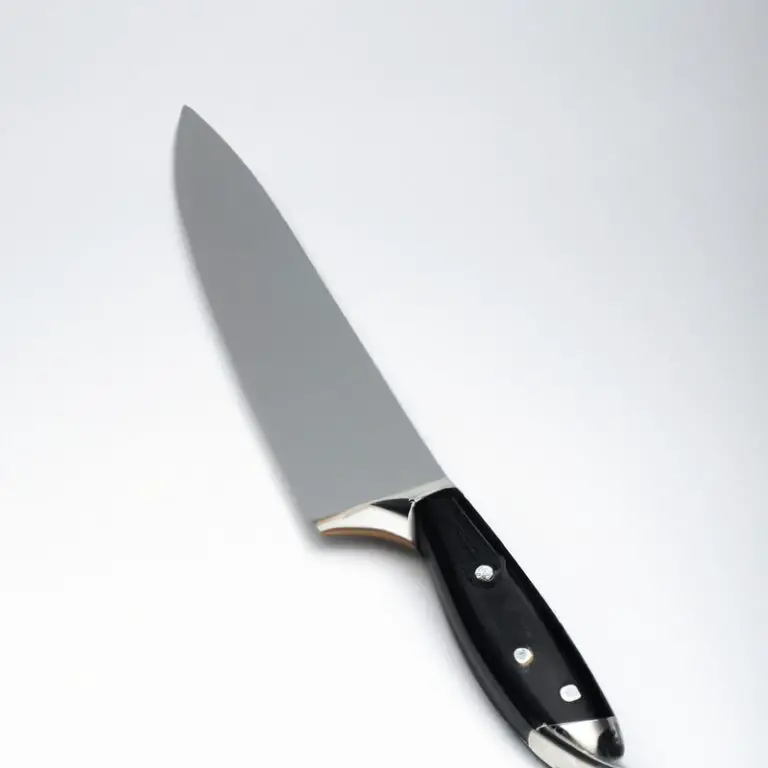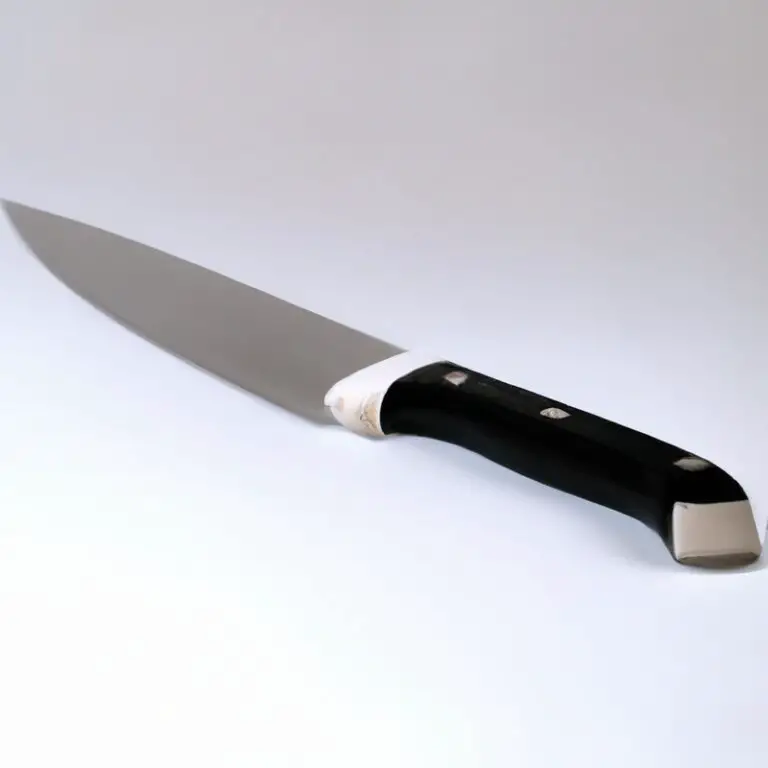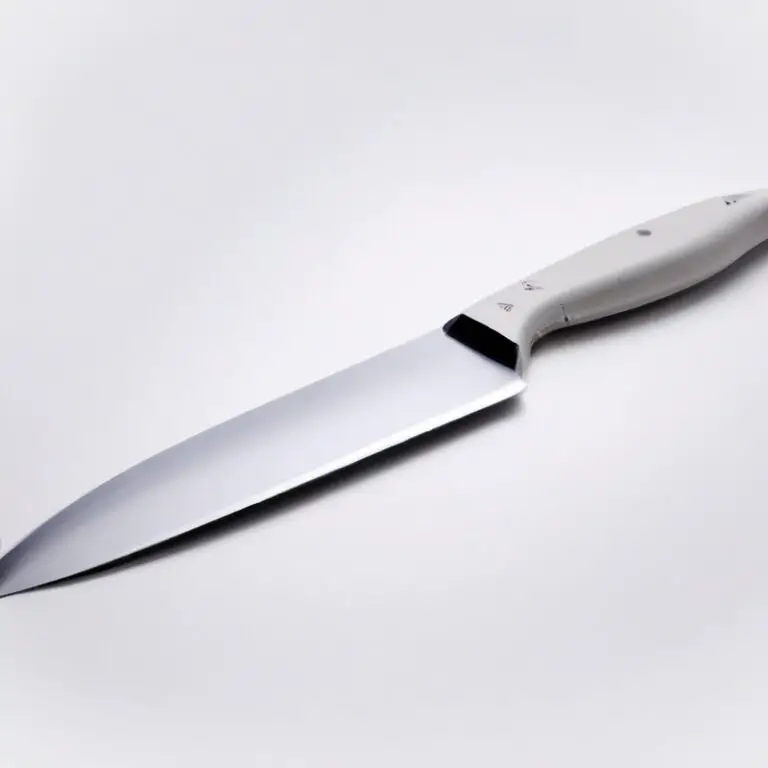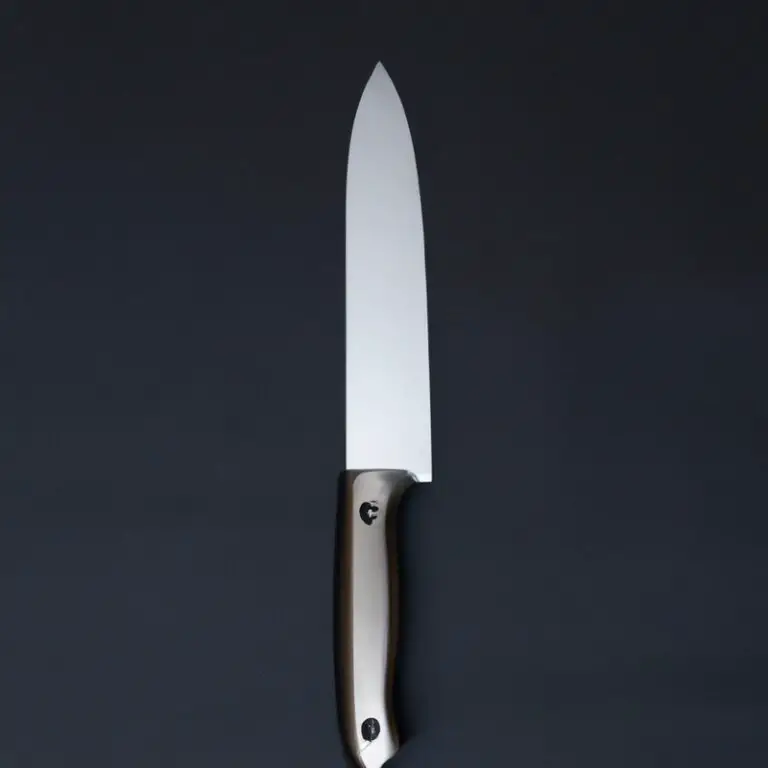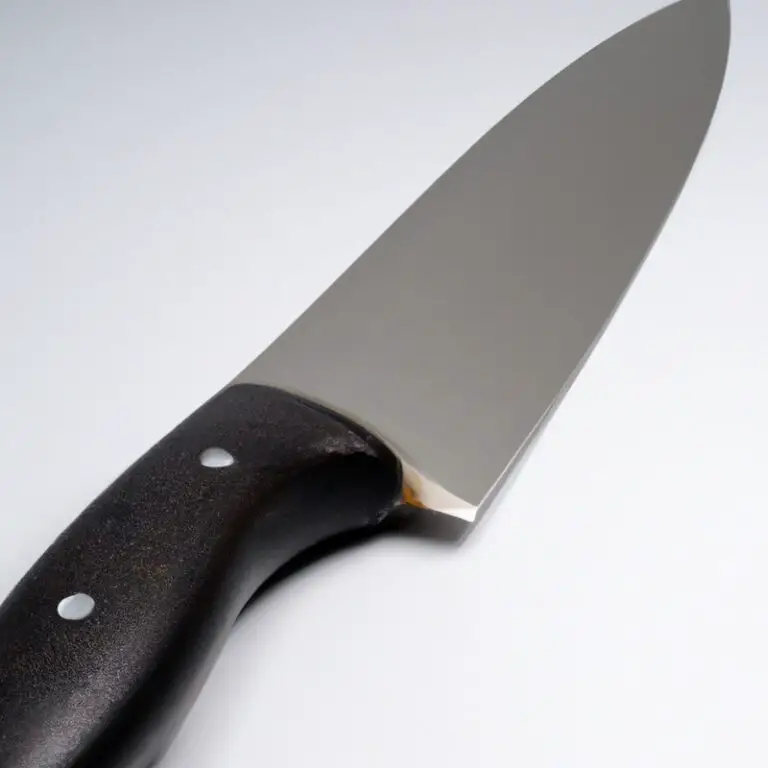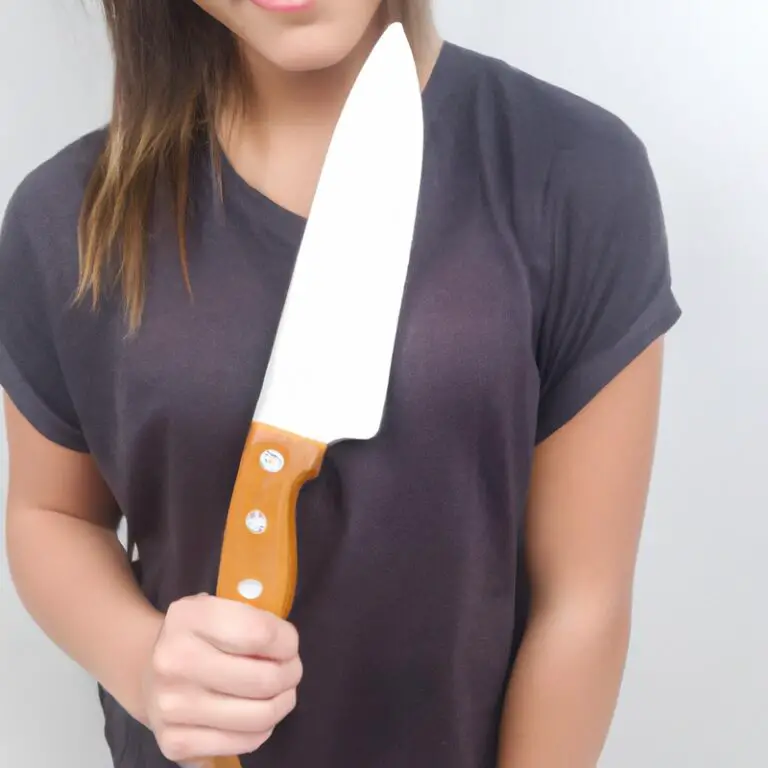How To Choose The Right Hardness Level For a Chef Knife Blade? Expert Guide
Key Takeaways:
- Consider the blade’s purpose and your personal preferences when choosing the knife’s hardness level.
- Harder blades are more durable and hold a sharper edge, but may be more difficult to sharpen and more prone to chipping.
- Softer blades are easier to sharpen and less likely to chip, but may not hold a sharp edge as long.
- Trust a reputable manufacturer or consult with a knife expert to ensure you choose a reliable and suitable hardness level for your chef knife blade.
As a chef, having the right knife is crucial for precision and efficiency in the kitchen. One important factor to consider when choosing a chef knife is its hardness level, which affects its durability, sharpness, and overall performance.
But with so many options available, it can be challenging to know which hardness level is best suited for your needs and skills.
In this comprehensive guide, I’ll walk you through everything you need to know about hardness levels in chef knife blades. From the types of steel used to the impact of heat treatment and how to maintain the ideal hardness level, we’ll cover it all.
So, let’s get sharpened up and dive into the world of chef knife blade hardness levels!
| Hardness Level (HRC) | Characteristics | Pros | Cons |
|---|---|---|---|
| 54-56 HRC | Soft | -Easy maintenance -Less prone to chipping | -Blade dulls quickly -Less edge retention |
| 58-60 HRC | Medium | -Good balance of durability and sharpness -Easy maintenance | -May chip if used improperly -Requires frequent sharpening for professional use |
| 62+ HRC | Hard | -Excellent edge retention -Strong and durable -Ideal for professional chefs | -More difficult to sharpen -May be more prone to chipping if used improperly |
Understanding the Importance of Hardness Level in Chef Knife Blades: A Comprehensive Guide
The hardness level of a chef knife blade is crucial in determining its durability, sharpness, and performance. Hardness is typically measured using the Rockwell scale, and different types of steel have varying ranges of Rockwell hardness.
When choosing a hardness level for your chef knife blade, it is essential to consider factors such as the intended kitchen tasks, your skill level, and the balance between hardness and durability.
A softer blade may be better for tasks that require more flexibility, while a harder blade may excel in tasks that demand precision and accuracy. Heat treatment is another factor that can impact the hardness level and overall quality of the blade.
On-going maintenance is necessary to maintain the ideal hardness level of your chef knife blade, and you need to address common hardness-related issues such as chipping, cracking, and dulling.
Types of Steel Used in Chef Knife Blades and Their Hardness Levels
Chef knife blades can be made from a variety of steel types, and each type has a different hardness level that affects its performance. Some of the most common steel types used in chef knife blades include:
- Carbon Steel: This type of steel offers excellent sharpness and edge retention, but it requires regular maintenance and may rust if not properly cared for. The hardness level of carbon steel is typically higher than stainless steel, ranging from 55 to 65 HRC.
- Stainless Steel: Stainless steel is a popular choice for chef knife blades because it is easy to maintain and resistant to rust and corrosion. However, it is often less sharp and has a lower edge retention than carbon steel. The hardness level of stainless steel can vary from 50 to 60 HRC.
- Damascus Steel: Damascus steel is a composite material made by layering different types of steel together. This creates a beautiful, unique pattern on the blade and can also improve its durability and toughness. The hardness level of Damascus steel can range from 55 to 62 HRC.
- Ceramic: Ceramics are also used in chef knife blades as they offer exceptional hardness and sharpness. However, they can be brittle and susceptible to chipping.
It is important to choose the right steel type and hardness level based on your personal preference and intended use for the knife. A higher hardness level may offer better edge retention and sharpness, but it can also make the blade more brittle and prone to chipping.
On the other hand, a lower hardness level may be more durable and resilient, but not as sharp.
What is Rockwell Hardness and How Does it Affect Chef Knife Blades?
Rockwell hardness is a measure of a material’s resistance to indentation. In chef knives, a higher Rockwell hardness generally means a stronger and sharper blade.
However, a knife with too high a hardness can become brittle and prone to chipping or breaking.
The ideal hardness for a chef knife blade depends on the intended use of the knife and the skill level of the user. When choosing a hardness level for a chef knife blade, it is important to consider factors such as the type of steel used and the heat treatment process.
Maintaining the ideal hardness level requires proper care and maintenance of the knife.
Factors to Consider When Choosing a Hardness Level for Your Chef Knife Blade
When choosing a hardness level for your chef knife blade, there are several factors to consider. These include the type of food you will be cutting, the frequency of usage, and your skill level.
For instance, a harder blade may be ideal for ingredients that are tough, dense, or fibrous, such as meats, root vegetables, or herbs.
However, a softer blade may be better for delicate items like fish or fruits to avoid crushing or tearing. Additionally, a harder blade can retain sharpness for a longer time but may also be more prone to chipping or cracking if mishandled.
On the other hand, a softer blade may dull faster but can withstand bending or twisting without breaking.
Therefore, it’s crucial to find the right balance between hardness and durability that meets your specific needs as a chef.
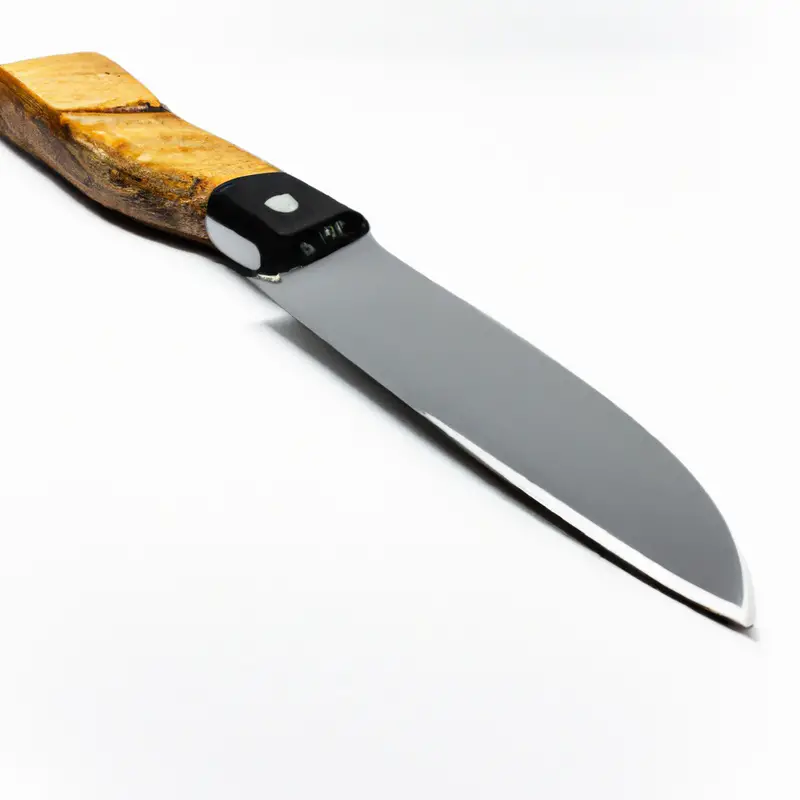
Why a Softer (or Harder) Blade May be Better for Certain Kitchen Tasks
The hardness level of a chef knife blade affects its sharpness, durability, and edge retention. A harder blade generally holds a sharper edge for longer periods but can be more brittle and prone to chipping.
On the other hand, a softer blade is less likely to chip but may need more frequent sharpening.
When it comes to specific kitchen tasks, softer blades are often preferred for tasks that require more flexibility, such as filleting fish or slicing through bone-in meats. A softer blade can bend without breaking, allowing for greater precision and control.
A harder blade, on the other hand, is better suited for tasks that require more force and impact, such as chopping through dense vegetables or cutting through hard bread crusts.
Ultimately, the decision to choose a softer or harder blade depends on personal preferences and the intended use of the knife. It is important to consider the type of steel used in the blade, the Rockwell hardness rating, and your own level of skill and experience in the kitchen when selecting the optimal hardness level for your chef knife blade.
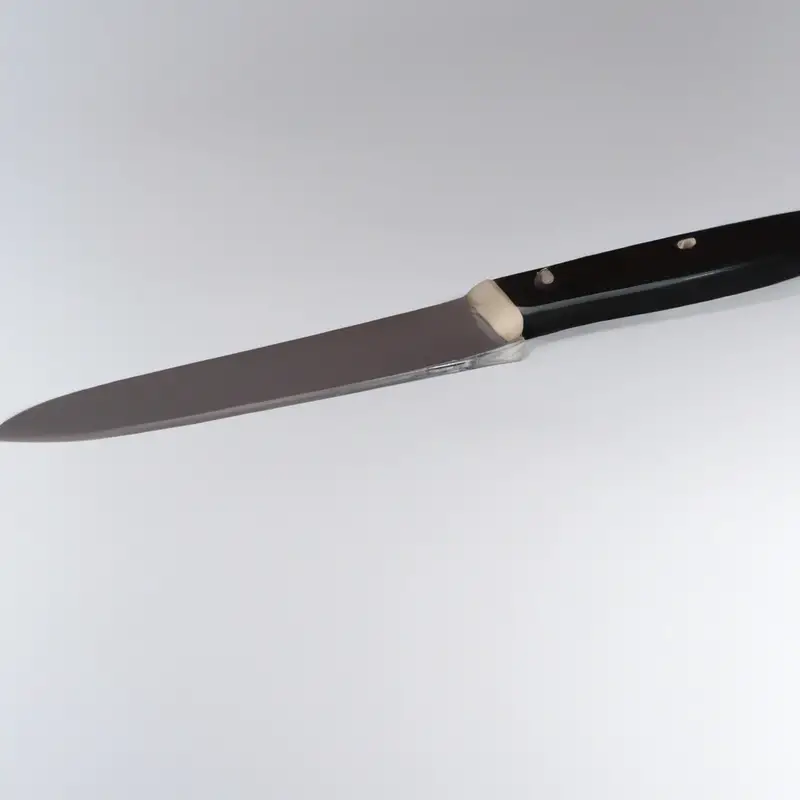
Finding the Sweet Spot: How to Strike the Right Balance Between Hardness and Durability
Finding the sweet spot between hardness and durability can be a challenge, but it is essential to ensure that your chef knife blade is capable of withstanding the demands of your kitchen. A blade that is too hard may become brittle and prone to chipping, while a blade that is too soft may become deformed or dull quickly.
To strike the right balance, it is important to consider factors such as the type of steel used, the heat treatment process, and the intended use of the knife.
A general rule of thumb is to aim for a Rockwell hardness between 55 and 62 for a chef knife blade. It is also important to note that a softer blade may be more suitable for tasks such as chopping vegetables and herbs, while a harder blade may be better for tasks such as slicing through meat and bone.
Matching the hardness level to your skill level is also important, as harder blades require more skill to handle properly.
To ensure that your chef knife blade maintains its ideal hardness level, it is recommended to regularly sharpen and honing as well as proper storage. Avoid using the knife on hard surfaces and do not place it in a dishwasher.
By finding the sweet spot between hardness and durability, you can ensure that your chef knife blade is capable of withstanding the demands of your kitchen while providing the precision and control needed to take your cooking to the next level.
How Heat Treatment Can Impact Hardness and Quality of Chef Knife Blades
Heat treatment is a crucial factor in determining the hardness and quality of a chef knife blade. The process involves heating the steel to a specific temperature, then cooling it down rapidly to achieve the desired level of hardness.
If done correctly, heat treatment can increase the blade’s hardness, strength, and wear resistance, making it ideal for cutting tasks that require precision and sharpness.
On the other hand, inadequate or improper heat treatment can result in a blade that is too soft, brittle, or prone to chipping and dulling quickly. To ensure the best possible heat treatment for your chef knife blade, it’s essential to work with a reputable and experienced blade maker or manufacturer.
They can advise you on the best heat treatment method that suits your blade steel and your intended use.
In summary, heat treatment is critical in achieving the right hardness and quality for your chef knife blade. When done expertly, it can significantly improve the cutting performance, durability, and longevity of your blade, making it a valuable investment in your kitchen arsenal.
Matching Hardness Level to Your Skill Level: What Beginner, Intermediate, and Professional Chefs Should Know
Matching the hardness level of your chef knife blade to your skill level is crucial in achieving optimal performance and efficiency in the kitchen. For beginners, it’s advisable to choose a softer blade with a Rockwell hardness of around 54-57.
Softer blades are more forgiving and easier to control, which can help prevent accidents while honing your sharpening skills.
Intermediate chefs can opt for blades with a hardness level of 58-61. These blades strike a balance between edge retention and toughness, providing more precision and versatility for varied cutting tasks.
Professional chefs, with years of experience and honed skills, can handle blades with a hardness level greater than 61.
These blades offer superior edge retention and durability, ideal for the intense demands of high-volume kitchens. However, choosing a harder blade requires proper maintenance, as it can be more prone to chipping and breaking.
Therefore, beginners and intermediate chefs should take extra care of their harder blades to ensure longevity.
In summary, match the hardness level of your chef knife blade to your skill level to maximize its performance and longevity. Softer blades are ideal for beginners, intermediate chefs should choose a balanced hardness level, while professionals can opt for harder blades with proper care and maintenance.
Maintaining the Ideal Hardness Level for Your Chef Knife Blade: Tips and Best Practices
Once you have selected the right hardness level for your chef knife blade, it is essential to maintain it properly to ensure its longevity and performance. Here are some tips and best practices for maintaining the ideal hardness level:
- Keep your knife clean and dry after each use to avoid rust or corrosion.
- Use a honing steel to sharpen your blade regularly and maintain its sharpness.
- Use a cutting board made of wood or plastic to avoid damaging the blade’s edge.
- Avoid cutting hard or frozen foods as they can cause the blade to chip or crack.
- Store your knife in a blade guard or a knife block to protect the edge and prevent any damage.
- Do not use a dishwasher to clean your knife as it can damage the blade’s finish and handle.
By following these simple tips, you can extend the life of your chef knife blade and maintain its ideal hardness level.
Overcoming Common Hardness-Related Knife Issues: Chipping, Cracking, and Dulling
Chipping, cracking, and dulling are common issues that can arise due to the hardness level of a chef knife blade. Chipping occurs when the edge of the blade breaks off, often due to improper use or a blade that is too hard.
To avoid chipping, it’s important to use the knife properly and choose a blade with a hardness level that is appropriate for the task at hand.
Cracking is another issue that can occur with a blade that is too hard. It can happen when the blade is subjected to extreme stress, such as cutting through bones or frozen foods.
To avoid cracking, choose a blade that is designed for the task you are performing and avoid using excessive force.
Dulling is a common issue that can affect any knife, regardless of its hardness level. It occurs naturally over time as the blade edge is worn down from use.
To prevent dulling, regularly sharpen and hone your knife, and choose a blade with an appropriate hardness level for your daily use.
By understanding these common hardness-related issues and taking steps to prevent them, you can prolong the lifespan and effectiveness of your chef knife blade.
Final Verdict
Choosing the right hardness level for a chef knife blade is essential for achieving optimal performance in the kitchen. Through this comprehensive guide, we have covered the various types of steel used in chef knife blades, the significance of Rockwell hardness, and the critical factors to consider when selecting the right hardness level.
We have also discussed how heat treatment can affect both hardness and quality, and the importance of matching hardness level to your skill level.
By maintaining a balance between hardness and durability, and following best practices for maintaining your knife’s ideal hardness level, you can overcome common knife issues like chipping, cracking, and dulling. Whether you’re a beginner or a professional chef, understanding the role of hardness level in your chef knife blade is key to achieving culinary excellence.
So, make an informed decision, and elevate your cooking game with a chef knife blade that matches your needs and style.

